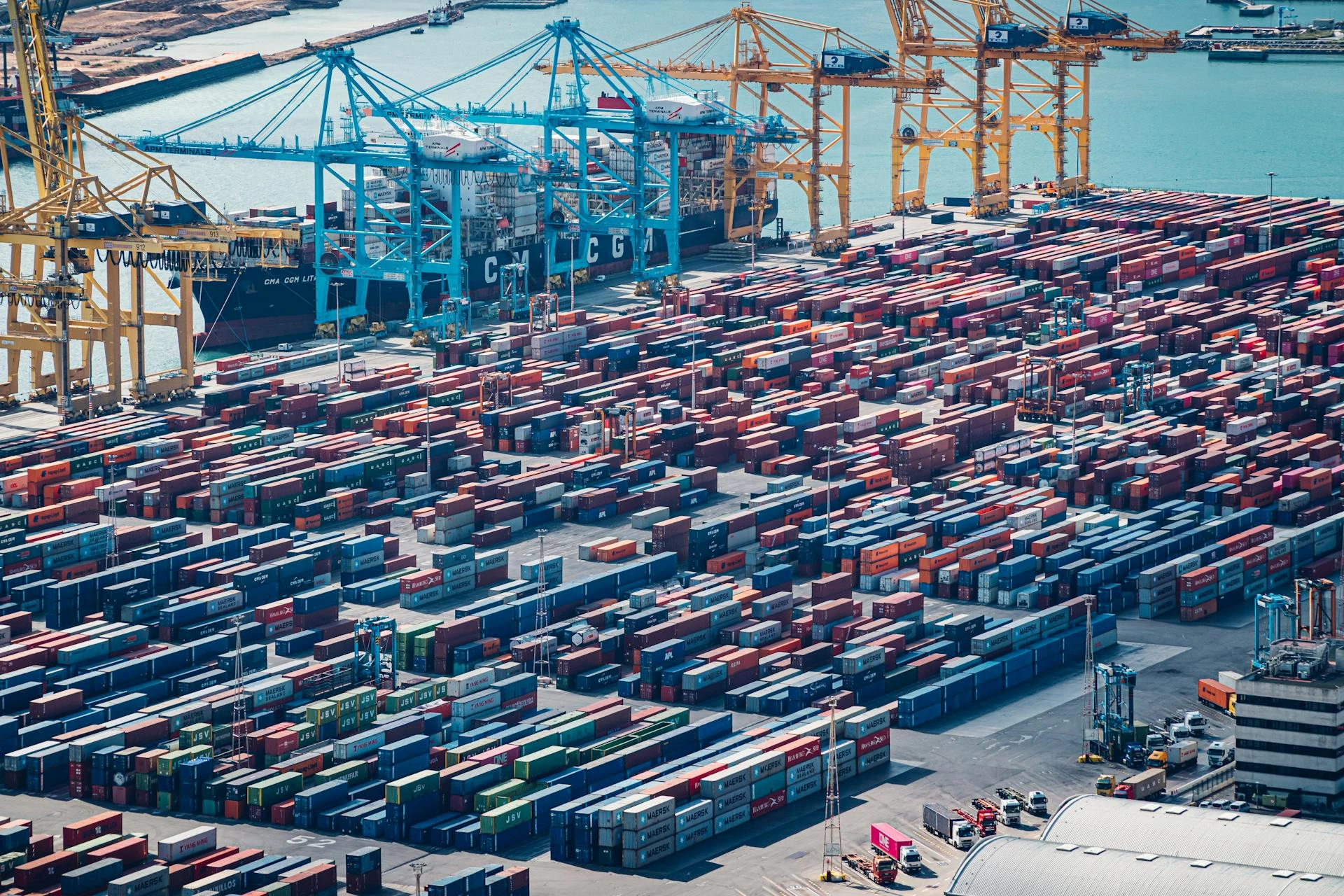Covid-19 causes business debt to drop by £189 million

John E. Kaye
- Published
- News

The impact of COVID-19 has seen a sharp drop of £189 million in insolvent business debt during the last quarter, according to corporate distress data analysts Red Flag Alert.
The firm’s ‘Write Off Report’ shows that total levels of insolvent business debt at 30th June 2020 were £1.577billion, down 10.7% from £1.766bn at the end of March. The decline has been due to the Government’s COVID-19 support measures, creditors flexing payment terms and less formal action being taken against companies in serious financial distress.
The quarterly figures are in complete contrast to trends this time last year, which saw total insolvent debt grow by £161m from April to June 2019.
Analysts predict the recent downward trend to be short-lived and point to retail sector debt as a barometer for what the future holds.
Mark Halstead, a partner at Red Flag Alert, explains: “Total insolvent debt has declined because struggling companies have been able to draw on financial support from the Government and provided with more breathing space by businesses they owe money to. This has created a reverse-effect for total debt. In contrast, insolvent debt in retail has grown by around £6million, which seems like a much lower number in comparison, but actually represents a 12.6% increase during the last quarter.
“This growth is important because retail performance is an early indicator of levels of consumer confidence and economic volatility. It’s a sector that accounts for high levels of employment and affects the performance of many other industries such as logistics and manufacturing. Both of these have also seen varying rises in written off debt during the last quarter and we can expect more sectors to follow suite in the coming months.”
Red Flag Alert’s Write Off data shows insolvent debt in the manufacturing sector grew by 17.4% from £89.6m to £105.2m, while logistics saw a marginal increase of 0.84%, taking debt levels to £62.3m at the end of June.
Other sectors that saw rises in insolvent debt include hotels and accommodation, where levels more than doubled to £12.4m, while travel and tourism witnessed a 79% spike in write offs, with insolvent debt growing from £5m to £9.1m during the past quarter.
Mark Halstead adds: “These figures are much more extreme, but this is due to very low base levels of existing insolvent debt in each of these closely aligned industries. The key concern here is that these sectors are showing limited signs of recovery from the pandemic, with the end of the prime summer season very close. We can expect this to lead to high levels of business failures and payment defaults during the next six months.”
The construction and property sectors account for some of the UK’s highest levels of insolvent debt, with total amounts standing at around £371million at the end of June, representing a 2.2% rise during the past quarter.
Mark Halstead concludes: “Our financial modelling since we started records in 2004 shows that the construction and property sectors typically operate with some of the highest levels of insolvent debt. The impact of the pandemic hasn’t yet been that pronounced on these sectors and the biggest risk they are now facing is uncertainty around office-based working caused by the pandemic. If home working trends cause a significant long-term dip in demand for commercial property, it could burst this debt bubble.
“This quarter’s Write Off figures have been skewed by the COVID-19 measures introduced by Government and positive steps quickly taken by companies during lockdown. We’re now coming to the end of Government support and can expect businesses to enter a more protectionist mode as they fight for survival. With this in mind, it’s likely that insolvent debt will see a sharp upwards trajectory over the next six months.”
Download The Write Off Report. +
Appendix
Total insolvent debt by sector for the 12 months to 30th June 2020, compared to 12 months to 30th June 2019 and 12 months to 31st March 2020.
| Sector | 12 months to 30th June 2020 | change vs 12 months to 31st March 2020 (%) | change vs 12 months to 30th June 2019 (%) |
| Automotive | 26,207,165.29 | -2.27 | 42.06 |
| Bars & Restaurants | 32,566,532.57 | -12.63 | 37.02 |
| Construction | 258,992,969.50 | 0.57 | 37.97 |
| Financial Services | 199,404,178.41 | 14.19 | 10.67 |
| Food & Beverages | 32,042,123.25 | 4.25 | -3.98 |
| Food & Drug Retailers | 8,636,733.89 | 3.27 | -41.14 |
| General Retailers | 58,736,055.67 | 12.65 | -37.06 |
| Health & Education | 21,151,409.40 | 8.87 | 4.70 |
| Hotels & Accommodation | 12,398,472.23 | 108.42 | 268.73 |
| Industrial Transportation & Logistics | 62,303,920.75 | 0.84 | -21.47 |
| Leisure & Cultural Activities | 14,385,935.16 | -12.74 | 8.47 |
| Media | 32,347,949.51 | 3.92 | 0.35 |
| Not Available | 44,146,572.93 | 9.54 | -21.83 |
| Other Manufacturing | 105,273,016.29 | 17.43 | 30.52 |
| Others – not reported | 25,768,057.87 | 5.63 | 39.44 |
| Printing and Packaging | 10,156,207.78 | -27.67 | -30.34 |
| Professional Services | 57,414,715.53 | -4.51 | -13.78 |
| Real Estate & Property Services | 111,584,416.48 | 6.21 | 2.87 |
| Sport & Health Clubs | 6,043,245.90 | -1.06 | -56.13 |
| Support Services | 245,905,077.29 | -47.55 | -49.49 |
| Telecommunications & Information Technology | 71,717,398.52 | -8.33 | 1.99 |
| Travel & Tourism | 9,101,343.55 | 79.05 | 175.23 |
| Utilities | 34,708,379.41 | -10.94 | 34.54 |
| Wholesale – not reported | 96,153,240.38 | -15.12 | -30.02 |
| TOTAL: | 1,577,145,117.56 | -10.71 | -11.52 |
For more information visit: www.redflagalert.com
For more Finance and Daily news follow The European Magazine
Sign up to The European Newsletter
RECENT ARTICLES
-
 UK and South Korea finalise upgraded free trade agreement
UK and South Korea finalise upgraded free trade agreement -
 Trump lawsuit against BBC raises questions over legal pressure on European public broadcasters
Trump lawsuit against BBC raises questions over legal pressure on European public broadcasters -
 UK government sets up Women in Tech taskforce amid gender imbalance concerns
UK government sets up Women in Tech taskforce amid gender imbalance concerns -
 Mycelium breakthrough shows there’s mush-room to grow in greener manufacturing
Mycelium breakthrough shows there’s mush-room to grow in greener manufacturing -
 Marriott strengthens South African portfolio with new Autograph Collection hotel in Cape Town
Marriott strengthens South African portfolio with new Autograph Collection hotel in Cape Town -
 Oxford to host new annual youth climate summit on UN World Environment Day
Oxford to host new annual youth climate summit on UN World Environment Day -
 Countdown to Davos 2026 as Switzerland gears up for the most heated talks in years
Countdown to Davos 2026 as Switzerland gears up for the most heated talks in years -
 Paribu buys CoinMENA in USD 240m deal as regional crypto markets consolidate
Paribu buys CoinMENA in USD 240m deal as regional crypto markets consolidate -
 AI innovation linked to a shrinking share of income for European workers
AI innovation linked to a shrinking share of income for European workers -
 African airspace overhaul set to shorten flight times for European travellers
African airspace overhaul set to shorten flight times for European travellers -
 Exclusive: Global United Nations delegates meet in London as GEDU sets out new cross-network sustainability plan
Exclusive: Global United Nations delegates meet in London as GEDU sets out new cross-network sustainability plan -
 Fast fashion brands ‘greenwash’ shoppers with guilt-easing claims, study warns
Fast fashion brands ‘greenwash’ shoppers with guilt-easing claims, study warns -
 Europe’s shrinking middle class is turning to the radical right, new study suggests
Europe’s shrinking middle class is turning to the radical right, new study suggests -
 Private sector set to overtake government as main driver of corporate sustainability in 2026, report suggests
Private sector set to overtake government as main driver of corporate sustainability in 2026, report suggests -
 Europe emphasises AI governance as North America moves faster towards autonomy, Digitate research shows
Europe emphasises AI governance as North America moves faster towards autonomy, Digitate research shows -
 JPMorgan plans multibillion-pound tower in Canary Wharf
JPMorgan plans multibillion-pound tower in Canary Wharf -
 Strong workplace relationships linked to higher initiative among staff, study finds
Strong workplace relationships linked to higher initiative among staff, study finds -
 Brexit still hitting poorest hardest as food costs rise and mental health worsens
Brexit still hitting poorest hardest as food costs rise and mental health worsens -
 Global crises reshape household food habits, major review finds
Global crises reshape household food habits, major review finds -
 Sir Trevor McDonald honoured at UWI London Benefit Dinner celebrating Caribbean achievement
Sir Trevor McDonald honoured at UWI London Benefit Dinner celebrating Caribbean achievement -
 Adelphi Masterfil acquires Karmelle to bolster UK machinery manufacturing
Adelphi Masterfil acquires Karmelle to bolster UK machinery manufacturing -
 Cost-of-living pressures push London staff to seek practical perks
Cost-of-living pressures push London staff to seek practical perks -
 AI and scent-science firm Arctech expands into agriculture with Rothamsted base
AI and scent-science firm Arctech expands into agriculture with Rothamsted base -
 Malta PM says future growth hinges on stronger higher-education system
Malta PM says future growth hinges on stronger higher-education system -
 Golden visa surge sets the stage for InvestPro Greece 2025
Golden visa surge sets the stage for InvestPro Greece 2025



























